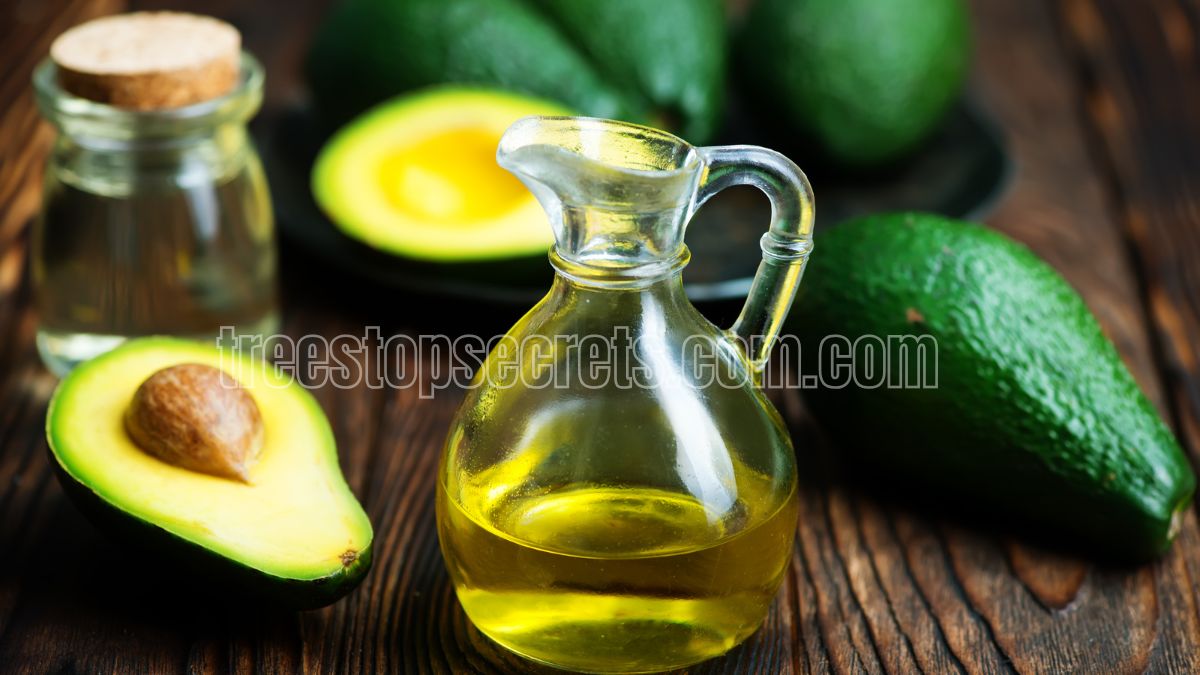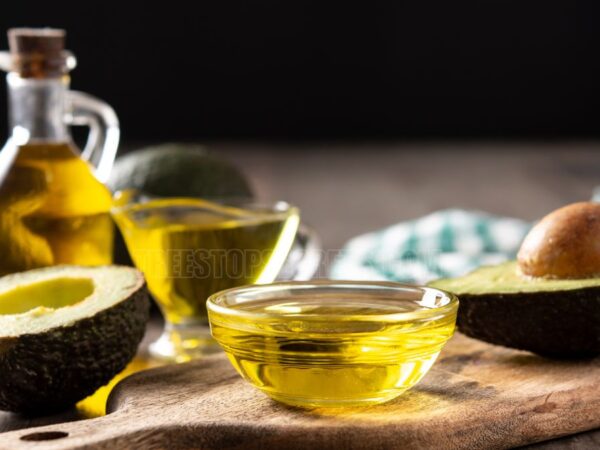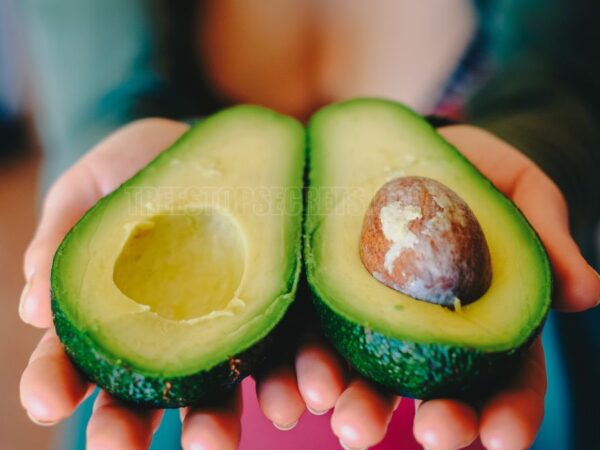First things first — you’re going to want to use ripe, soft avocados and have proper equipment, including a high-speed blender and fine strainer.
Here’s how to make avocado oil at home: First, puree the avocados into a fine paste. Then, blend them with some water to facilitate the extraction and separation of the oil.
From there, you’ll want to strain the mixture to remove any solids and keep the infused oil. The final product is a smooth, scrumptious oil great for sautéing or drizzling over salads.
In this guide, I’ll take you step-by-step on how you can produce high quality avocado oil at home.
Additionally, I’ll share the best ways to use it in your kitchen!
Key Takeaways
- Learn about different avocado oil extraction methods, like cold pressing and chemical extraction. The method you choose will impart a distinct flavor as well as any potential nutrition to your oil.
- Diversity Avocado of the variety, including types such as Hass, provide oils with different tastes and oil yields. Be considerate of avocado maturity to improve the oil’s quality and taste.
- Get the right equipment, including an oil press and a high speed blender, to extract oil at home. Keep all equipment clean and food safe to prevent contamination.
- A rigorous, step-by-step process of cold-press extraction is followed to obtain a high-quality oil. Mechanical processes are usually less energy and chemical intensive than chemical processes, but they take a greater level of precision and workmanship.
- If you’ve made your own, store in dark glass containers in a cool dark place to keep it fresh. If you’re careful with how you store it, you can double or even triple your oil’s shelf life.
- Follow proper extraction and storage safety precautions and quality control practices. Testing for flavor and aroma will help you know your oil is pure.
Understanding Avocado Oil Extraction
When extracting avocado oil, there are various extraction methods which each impact the quality and flavor of the final product. The best known method of extraction is cold pressing. This cold press mechanical method uses knives or grinding stones to break down the fruit and then press it to remove oil without adding heat.
Cold pressing maintains the oil’s natural flavor and nutrients, making each oil perfectly rich and vibrant. Conversely, solvent extraction uses chemicals that are often used in industrial, large-scale production with the objective of achieving the highest possible yield. This method damages the integrity of the oil, leading to a lower quality oil that is less appropriate for culinary applications.
1. What are the extraction methods for avocado oil?
Cold pressing, favored by purveyors for its purported health benefits, produces oil without additives or industrial solvents. It captures the plant’s complete flavor spectrum!
Solvent extraction is better for maximizing oil yield, but may introduce undesirable residues. This is primarily due to its expensive extraction method.
2. How do avocado varieties influence oil characteristics?
Hass avocados have a uniquely creamy texture that’s hard to beat. They pack in much more oil and have a deep, buttery taste, surpassing other known varieties such as the Fuerte or Bacon.
The maturity of the avocado is extremely important. Only ripe avocados produce the highest quality oil, while oil made from under-ripe fruit is lower in flavor quality.
3. What factors affect oil extraction efficiency?
Ripeness is important. The perfect avocado should have a little give to it when pressed.
Extraction conditions, such as time and temperature of processing during extraction, have a great effect on the yield. Keeping the temperature just right is very important to prevent the oil from reaching a point of quality loss.
Equipment and Materials Needed
Equipment and Materials Needed to Produce Avocado Oil at Home
This allows for an easy, efficient extraction process and top-tier oil. Here’s a run-down of everything you’ll need.
1. What tools are essential for home avocado oil production?
- An oil press is the most effective tool for extracting oil. It quickly and easily separates the oil from avocado pulp, making for a greater yield than with other processing methods.
- A high-quality blender helps create a smooth mash from the avocados, which is essential for maximizing the oil extraction. To better facilitate oil release during the pressing process, the fruit is then blended to break down the cellular structure.
2. How to maintain sanitation during the extraction process?
- Begin by scrubbing every piece of equipment, from your oil press to your high-speed blender. Clean with hot, soapy water and then rinse thoroughly. This step is crucial to ensure no contamination from residues or bacteria occurs.
- Use food-safe containers and utensils throughout the process. A nut milk bag or muslin cloth works well to strain out the oil. This method prevents any undesired contaminants from making it into your final product.
A naturally ventilated space, such as a large window or breezy outdoor area, ensures the avocado paste dries evenly.
Store the oil in a dark glass airtight container. Store it in the fridge to triple its shelf life, giving you a few months of time and maybe even up to a year!
Since 70% of avocado oil is made up of Oleic Acid, it’s the perfect answer to healthifying your kitchen.
The Extraction Process
Extracting one’s own avocado oil results in a deep and satisfying reward. You’ll be rewarded with an exceptionally high-quality oil, which captures and protects the fruit’s inherent qualities and nutritional value.
The extraction process is made up of a few key steps that safeguard the final product, leaving it naturally ready-to-drink yet pure and flavorful.
- Select ripe avocados.
- Mash the avocados into a paste.
- Let the paste dry in a cool, dark, well-ventilated place for a few days.
- Through a fine strainer or muslin cloth squeeze the paste to release every drop of oil from the paste.
- Repeat the squeezing process at least twice a day.
- Store the oil in a cool, dark place.
1. How to extract oil using mechanical methods?
An oil press can make the oil extraction process much more efficient and quick. Once you’ve mashed the avocados into a paste you can pump it right into the oil press.
This technique results in larger oil yields, all while maintaining the quality of the oil. Fortunately, mechanical extraction minimizes heat.
This is crucial to keep your oil extra virgin and protect all those good-for-you benefits.
2. What are the steps for chemical extraction?
Chemical extraction is a more common method in commercial applications, where a solvent, typically hexane, is used to actually pull the oil from the plant material.
Nonetheless, safety measures are essential. To protect yourself against toxic chemicals, always work in a well-ventilated room and use personal protective equipment.
3. What challenges may arise during extraction and how to overcome them?
Typical difficulties consist of poor oil extraction, sometimes due to inadequate pressing or avocado paste that’s too wet.
Make sure the paste is completely dry prior to the extraction. The good news is if something goes wrong, adjusting the drying time or adjusting the pressing technique can make a world of difference.
Nutritional Benefits of Avocado Oil
Avocado oil is loaded with nutritional benefits that help improve your health in various ways.
Dietary Healthy Fats
As a high-quality monounsaturated oil, avocado oil is an essential part of a heart-healthy diet. These fats are known to help lower levels of LDL or bad cholesterol, which can help reduce your risk of heart disease.
Packed with Antioxidants
Including vitamin E, avocado oil supports the integrity of skin cells while helping to reduce inflammation throughout the body.
1. What are the health advantages of using avocado oil?
The combination of avocado oil’s unique fat composition is what makes promoting heart health so effective. The monounsaturated fats help to maintain healthy cholesterol levels, which is crucial for cardiovascular function.
Additionally, due to its anti-inflammatory benefits, avocado oil can help calm skin irritations and promote a more even skin tone. With consistent use, avocado oil can give you a healthy, glowing appearance, proving the oil’s versatility extends past the kitchen.
2. Can avocado oil be used for baking and high-heat cooking?
Another benefit of avocado oil is its high smoke point, about 520°F. This quality makes avocado oil a top pick for high-heat cooking methods, such as frying and high-heat baking.
Even at high temperatures, this means you can use it confidently without the risk of harmful compounds forming. Add avocado oil to your cooking routine to give meals a nutritional and flavorful lift!
Use it on cooked veggies, grilled meats, or even baked treats like muffins to reap the nutritional rewards. Its delicious flavor can take your best-loved recipes to the next level while still making them healthy.
Storage and Shelf Life
Proper storage of homemade avocado oil will go a long way toward preserving its quality and extending its shelf life. Good storage practices safeguard the oil from air, light, heat and time, all of which can cause a loss of freshness. Here are some tips on how to store your oil and how long it should last.
1. How to properly store homemade avocado oil?
- Store in opaque or dark glass containers. These dark containers protect the oil from light, which is another factor that can degrade oil more quickly.
- Store the oil in a cool, dry space away from direct sunlight. Keep your spices away from the stove or near windows because temperature and humidity have a powerful influence on freshness.
By adhering to these best storage practices, you can enjoy the full flavor and aroma of your avocado oil for much longer.
2. What is the shelf life of avocado oil and how to extend it?
Average shelf life of homemade avocado oil
Homemade avocado oil usually lasts around three to six months if stored properly. There are a number of other things that influence how long it can last. Exposure to light, air, and heat can cause rancidity too.
To maximize the shelf life of your avocado oil, you may want to store it in the refrigerator. Cold temperatures reduce oxidation, which is the process that makes oils rancid, allowing them to stay fresher longer.
Making sure to seal the container tightly after each use reduces exposure to air.
Quality Control and Safety Measures
Whether you’re making avocado oil at home or on a large scale, quality control and safety measures should be top priority. Appropriate quality control measures can improve the oil’s safety and reduce hazards along the supply chain from extraction to storage.
1. How to ensure the purity of homemade avocado oil?
To be sure that you’re getting the best quality avocado oil, it’s best to look for testing done for flavor and aroma. In good quality fresh oil, the aroma should be nutty, the flavor should be smooth. If you open a bottle of oil and it smells rancid or bitter, this is not pure olive oil.
Filtering the oil is a key step, too. If there are solid particles, strain the oil through a fine mesh strainer or cheesecloth and then store. This improves appearance quality, brightness, and light dissemination, as well as prolong shelf life.
Quality Control Measures:
- Use ripe, undamaged avocados.
- Test the oil's flavor and aroma.
- Filter the oil to remove impurities.
- Store in a cool, dark place.
2. What safety considerations should be taken into account?
When cleaning, these steps can lead to contamination. Make sure all the tools and containers you use are clean and appropriate for food use. This reduces the likelihood of injecting harmful substances into the oil.
Don’t use overly ripe avocados. They can spoil quickly, causing off-flavors and, more concerning, health risks. Pick well-ripened fruit that are still a little firm to slightly soft to the touch for optimal quality.
Market Considerations
Finally, when moving in to explore the decorative realm of avocado oil, knowing the challenges of the market, along with proper regulations and labeling, is imperative. Understanding this not only keeps you on the right side of the law, but it’s good for your brand’s expertise and authority too.
1. What regulations apply to selling avocado oil?
Once avocado oil is sold commercially, different regulations enter the picture. Obtaining the appropriate certifications or permits is essential. For example, you might need to get a food handler’s permit or a business license, just to name a few, depending on your state.
Each state can have unique requirements, so staying in contact with local health departments is vital. From farm to fork, following food safety regulations throughout the production process is critical. You need to be able to have a sterile environment.
Proper storage conditions and thorough oil processing are necessary to keep the oil from becoming contaminated.
2. How to label homemade avocado oil correctly?
Properly labeling your homemade avocado oil is just as important as making it. Be sure to include relevant compelling information on the label. This should include the product name, net weight in ounces, ingredients list, and a way for consumers to contact you.
It’s good practice to put production dates and expiration dates on the label. To help your product cut through the clutter, go beyond traditional marketing tactics and get visually creative on your label.
Eye-catching designs, unique fonts, or even just a little narrative about where your oil came from can do the trick.
Conclusion
It’s that simple to make avocado oil and enjoy all the fresh color, rich flavor and healthy goodness it brings to your kitchen. With some basic equipment and an easy extraction process, you can create a nutrient-rich product in your own kitchen. Finally, don’t forget the importance of storage and quality control to ensure your oil stays fresh and flavorful. The nutritional benefits of avocado oil enrich your meals with healthy monounsaturated fats and antioxidants. While starting your new project, you will enjoy the fruits of producing something safe and healthy. So, grab your tools and make some avocado oil this weekend! You’ll be amazed at how it enhances flavor and all the good it does your food and your body.
Frequently Asked Questions
How is avocado oil made?
Avocado oil is produced by crushing the fleshy pulp of mature avocados to extract the oil. The oil is cold-pressed or heat extracted to preserve flavor and the highest nutritional value.
What equipment do I need to make avocado oil?
To make avocado oil, you need a blender, a fine mesh strainer or cheesecloth, a bowl, and a storage container. Optional equipment There are higher quality methods of extraction available if you purchase, or can rent, a cold-press machine.
How long does the extraction process take?
After this, the extraction process typically lasts 1-2 hours. The specific amount of time will vary based on the method you use and the number of avocados you’re processing. Cold pressing is a method that uses no heat and can take longer than heat extraction.
What are the nutritional benefits of avocado oil?
Avocado oil is highly rich in monounsaturated fats, like olive oil, and antioxidants and vitamins E and K. Its benefits include supporting heart health, lowering inflammation, and even promoting healthy skin.
How should I store avocado oil?
As with all oils, avocado oil should be stored away from heat and light, ideally in a dark glass bottle. This ensures that all its wonderful flavor and nutritional qualities are preserved. Protect your oils from heat and light.
What is the shelf life of avocado oil?
When stored properly, avocado oil has a shelf life of 6-12 months. Look for off smells or flavors as a guide to freshness.
Are there safety measures I should consider?
Yes, just make sure you have thoroughly cleaned all equipment to avoid pathogens. Additionally, use perfectly ripe avocados to reduce spoiled fruit and enhance the quality of your freshly extracted oil.
Image Source: Paid image from CANVA





